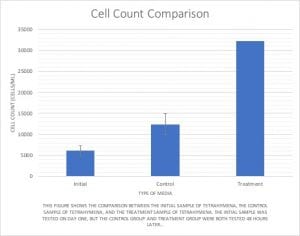Lab 2: Presentations and Soil Collection
Mackenzie Singer
1/24/19
Purpose:
The purpose of this lab was to present information on metabarcoding to the class because we will be using the procedure throughout the semester. We also created non-flooded plates from the soil we collected that we can use later in the lab and tested the pH levels of our non-flooded plates.
Procedure:
Soil Collection:
- Designate a tree on campus to collect soil from.
- Take pictures of the full tree, the leaves, and the collection site.
- Use a spoon and dig about 1-2 inches deep into the soil and place it in a plastic bag.
- Fill out the data sheet with the tree’s information and submit it to canvas.
Non-Flooded Plate:
- Obtain a large petri dish and weigh it without a lid. Record mass in grams.
- Pour enough soil into the petri dish so that the bottom is fully covered.
- Add DI water using a pipette, making sure that the water covers all of the soil but isn’t over-flooded.
- Weigh the petri dis containing soil. Record in grams.
- Use a dissecting or compound microscope to observe and take note of any organisms in the soil.
Soil pH:
- Fill a test tube with 3mL of soil.
- Fill the test tube with water up to the 8mL line.
- Shake the tube for at least 3 minutes.
- Pipette about 1mL of water from the falcon tube and move it to a falcon tube
- Centrifuge the falcon tube for a minute.
- Take a pH strip and place it in the falcon tube. Let sit for one minute.
- Compare the color of the strip to the colors on the package. Record the pH value.
Data and observations:
| Empty petri dish | 5.8g |
| Petri dish with soil | 32.6g |
| Soil pH | 6.0 |
Storage:
Petri dishes were labeled and placed at the back of the lab. The soil test tubes were placed into a storage rack. All microscopes were unplugged and covered. Used falcon tubes and pipettes were thrown away.
Conclusion and future steps:
I am very excited to observe the DNA of ciliates and trees around campus throughout this semester. I was very interested in the presentations and ways to observe DNA. I could not find any organisms in my soil, but I am hoping that a closer look in next week’s lab will allow me to find ciliates.





